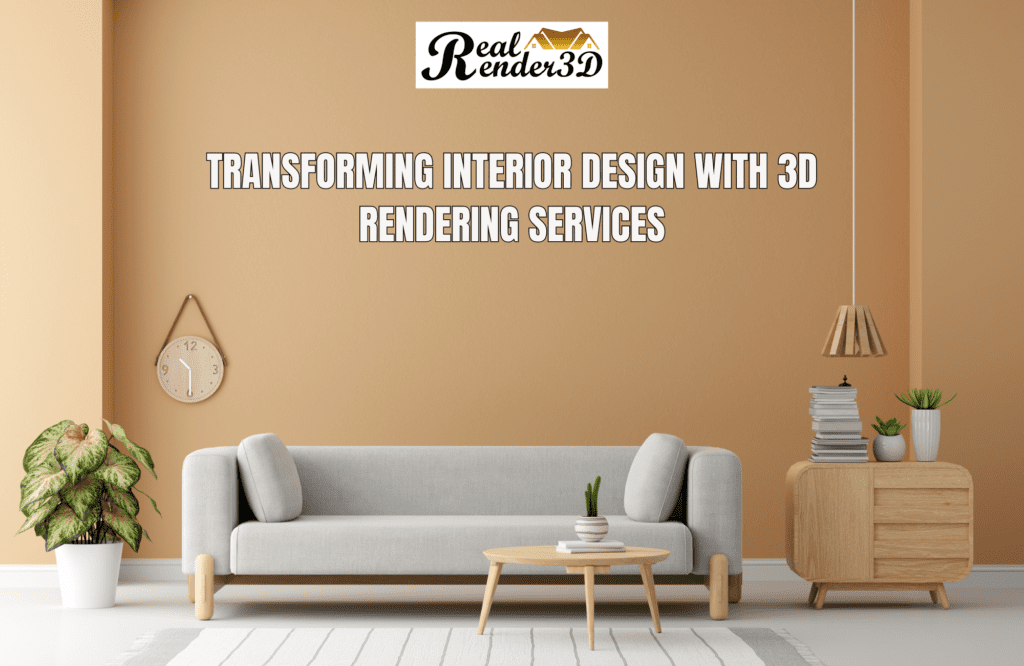Introduction
Interior design has undergone a significant transformation with the advent of 3D rendering technology. This revolutionary tool has changed the way designers conceptualise, present, and execute their ideas, making the design process more efficient and the results more impressive. In this blog, we will explore the role of 3D interior rendering in interior design, its applications, benefits, and future trends.
The Role of 3D Rendering in Interior Design
3D rendering involves creating three-dimensional images from a computer model. It allows designers to visualise spaces with a high degree of realism, providing a clear picture of how a room will look before any physical work begins. This capability is crucial for making informed design decisions and communicating ideas effectively to clients.
Applications of 3D Rendering in Interior Design
Residential Interiors: Homeowners can see a realistic preview of their renovated kitchens, living rooms, or bedrooms. This helps in making choices about colors, furniture, and layout without the risk of costly mistakes.
Commercial Spaces: Businesses can visualise their office layouts, retail stores, or hospitality environments, ensuring the design aligns with their brand and functional needs.
Hospitality and Retail Design: Hotels and retail outlets benefit from 3D rendering by showcasing different design concepts and arrangements, which can enhance guest experience and customer flow.
The 3D Rendering Process
Initial Conceptualization and Sketching: Designers start with sketches and ideas, which are then translated into digital models.
Modelling and Texturing: The digital model is created with detailed textures to mimic real-life materials.
Lighting and Rendering: Appropriate lighting is added to the scene to create realistic shadows and highlights.
Post-Production and Final Touches: Final adjustments are made to enhance the image quality, adding effects and fine-tuning details.
Tools and Software for 3D Rendering
Popular software includes SketchUp, 3ds Max, Blender, and V-Ray. Each offers unique features, from user-friendly interfaces to advanced rendering capabilities. Choosing the right tool depends on the specific needs of the project and the designer’s expertise.
Case Studies of Successful Projects
Residential Project: A designer used 3D rendering to create a luxurious living room for a client. The render allowed the client to visualise the space with different furniture arrangements and colour schemes, leading to a final design that exceeded their expectations.
Commercial Project: A retail store used 3D rendering to redesign its layout. The realistic visuals helped in planning the product placement and optimizing the customer journey, resulting in increased sales and customer satisfaction.
Benefits for Interior Designers
3D rendering enhances visualisation, making it easier to present and refine design concepts. It improves client communication by providing a tangible preview of the final outcome, reducing the risk of misunderstandings. Additionally, it streamlines project management by allowing for precise planning and execution.
Client Perspective: Seeing Before Believing
Clients benefit from 3D rendering services as it enables them to see a detailed preview of the design. This visual clarity reduces the chances of revisions and ensures that the final result matches their expectations, leading to higher satisfaction and trust in the designer.
Trends and Innovations in 3D Rendering
Real-Time Rendering and Virtual Reality: These technologies allow clients to walk through a space in real time, making adjustments on the fly.
Augmented Reality Applications: Clients can see how furniture and decor items will look in their actual space using AR apps.
AI and Machine Learning: These technologies are improving the speed and accuracy of rendering processes, making them more efficient and cost-effective.
Future of Interior Design with 3D Rendering
Emerging technologies will continue to enhance the capabilities of 3D rendering, offering even more immersive and interactive design experiences. Designers should stay updated with these trends to leverage the full potential of 3D rendering in their projects.
Practical Tips for Interior Designers
Best Practices: Focus on details and realistic textures to create stunning renders.
Common Mistakes to Avoid: Ensure proper lighting and avoid overcomplicating the design with unnecessary elements.
Resources and Tutorials: Continuously learn and improve by using online resources and tutorials to stay ahead in the field.
Conclusion
3D rendering is a transformative tool in interior design, offering numerous benefits to designers and clients alike. It enhances visualisation, improves communication, and streamlines the design process, leading to better project outcomes. As technology continues to evolve, the impact of 3D rendering on interior design will only grow, making it an essential skill for modern designers.
Frequently Asked Questions
1. What is 3D rendering in interior design?
3D rendering is the process of creating three-dimensional images from digital models, allowing designers to visualize and present realistic views of interior spaces.
2. How does 3D rendering benefit interior designers?
It enhances visualization, improves client communication, and streamlines project management by providing detailed, realistic previews of design concepts.
3. Can 3D rendering help reduce project costs?
Yes, it minimizes costly mistakes by allowing designers and clients to make informed decisions and adjustments before physical work begins.
4. What software is commonly used for 3D rendering in interior design?
Popular tools include SketchUp, 3ds Max, Blender, and V-Ray, each offering unique features suitable for different project needs.
5. How does 3D rendering improve client satisfaction?
It provides clients with a clear, realistic preview of the final design, reducing misunderstandings and ensuring their expectations are met.
6. What are the latest trends in 3D rendering for interior design?
Real-time rendering, virtual reality, augmented reality, and AI-powered rendering are among the latest innovations enhancing design experiences.
7. Is 3D rendering suitable for all types of interior design projects?
Yes, it is versatile and can be used for residential, commercial, hospitality, and retail design projects to visualize and refine various design concepts.
Alex Smith is a content writer at RealRender3D, writing informative articles on 3D rendering, interior design, architecture, and related topics.
With over 15 years of experience at top UK architecture and interior design firms, Alex leverages his expertise to write engaging content educating readers on AEC industry trends and best practices.
Connect with Alex at alex@realrender3d.co.uk.
